Moon Studios is a team of developers well-known for their platformer masterpieces Ori and the Blind Forest and its sequel Ori and the Will of the Wisps. So many fans of the Ori games were quite surprised when Moon Studios announced that with their next title No Rest For The Wicked they are leaving the platformer genre and will test their mettle in the action RPG genre. From a fairytale-like world of Ori, who traversing a charming forest full of beauty, Moon Studios is taking us to the grim island of Isola Sacra, which is riddled with pestilence and where you will have to fight hard for every inch of progress.
No Rest For The Wicked is now going through the Early Access period, where players can get acquainted with the world of No Rest For The Wicked by playing the story's first chapter. Therefore, this review is a look at the Early Access version of the game, it does not cover a complete game.
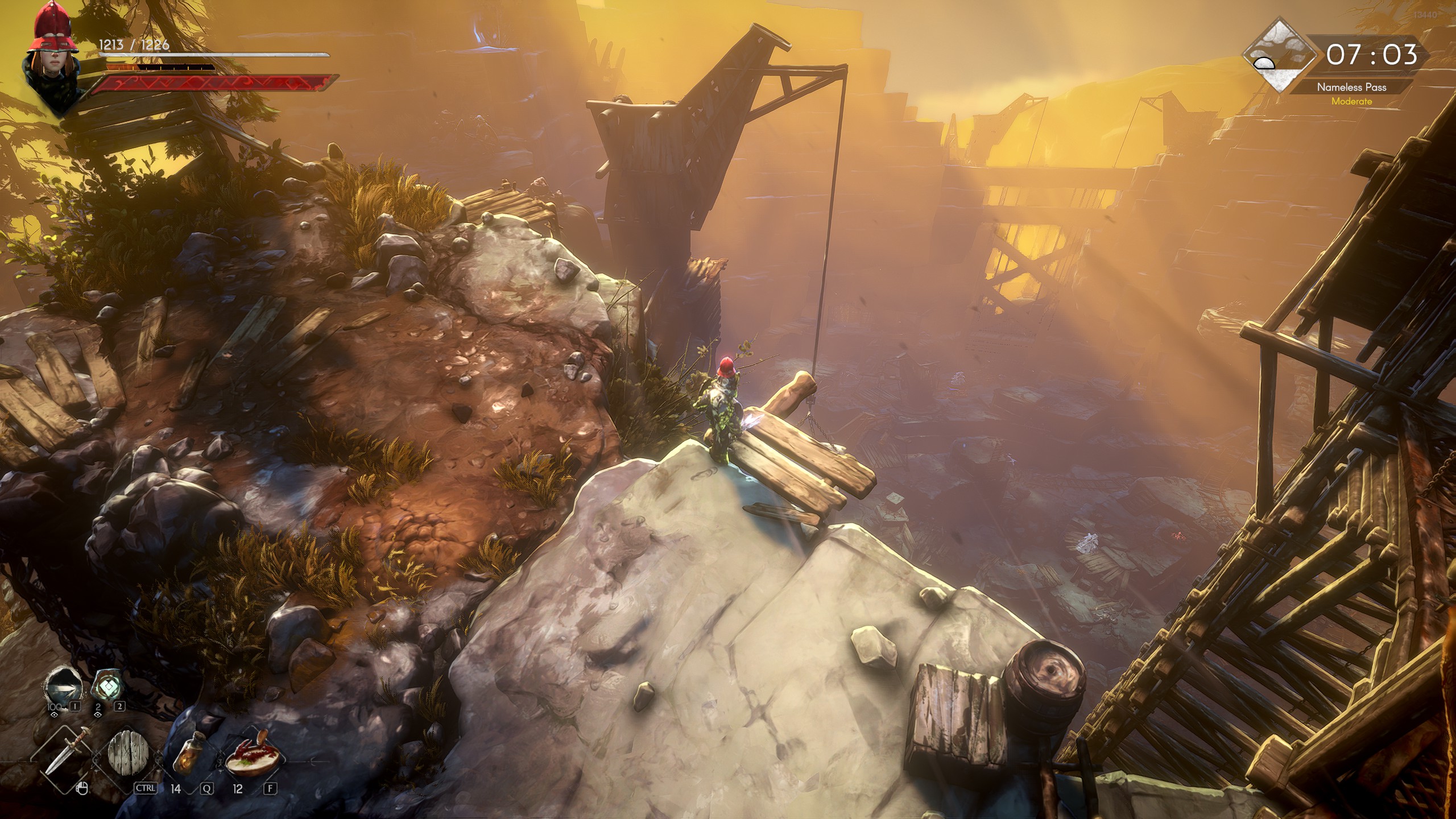
Long live the king!
The art style of the game immediately grabbed my attention. The game looks like it was hand-painted, and the first look at the environment will assure you that it is indeed a Moon Studios game. The color palette strongly reminds me of the darker sections of the Ori games. The world of No Rest for the Wicked looks grim and gritty, yet at the same time, it has a strange charm that often made me stop and admire the view and makes the roaming around the island very enjoyable (when you’re not being shot at or under attack of mutated animals). What is however very new and different, are the characters. They are strangely out of proportion, with grotesquely long hands, yet the detailed facial animations in cutscenes and an awesome voice-acting make the characters believable and the story captivating. The strange look of the characters sometimes gives them an almost comical look (especially with certain armor types that look more like a parody than a real piece of equipment) and requires some getting used to. But later in combat, it helps you to clearly recognize enemy stances and movements and it definitely gives the game a unique look.
The story of the game begins with the death of the old king, and his son who just became the new king, has to deal with the pestilence that is spreading across one of his territories, the island of Isola Sacra, transforming its inhabitants into monsters. The young king, eager to prove his strength, is sending the inquisition army led by his advisor Madrigal Seline to cleanse the island.
At first you as a player do not know much about your own character, only that you are headed to the same island as the inquisition forces and that not everyone is happy about your presence. Your ship sinks close to the island and as per usual, you are left on a beach with no equipment and with monsters in your way. The only other survivor of the shipwreck tells you that you should head towards the city of Sacrament, but that you stand little chance against the enemies in your way. Time to prove him wrong…
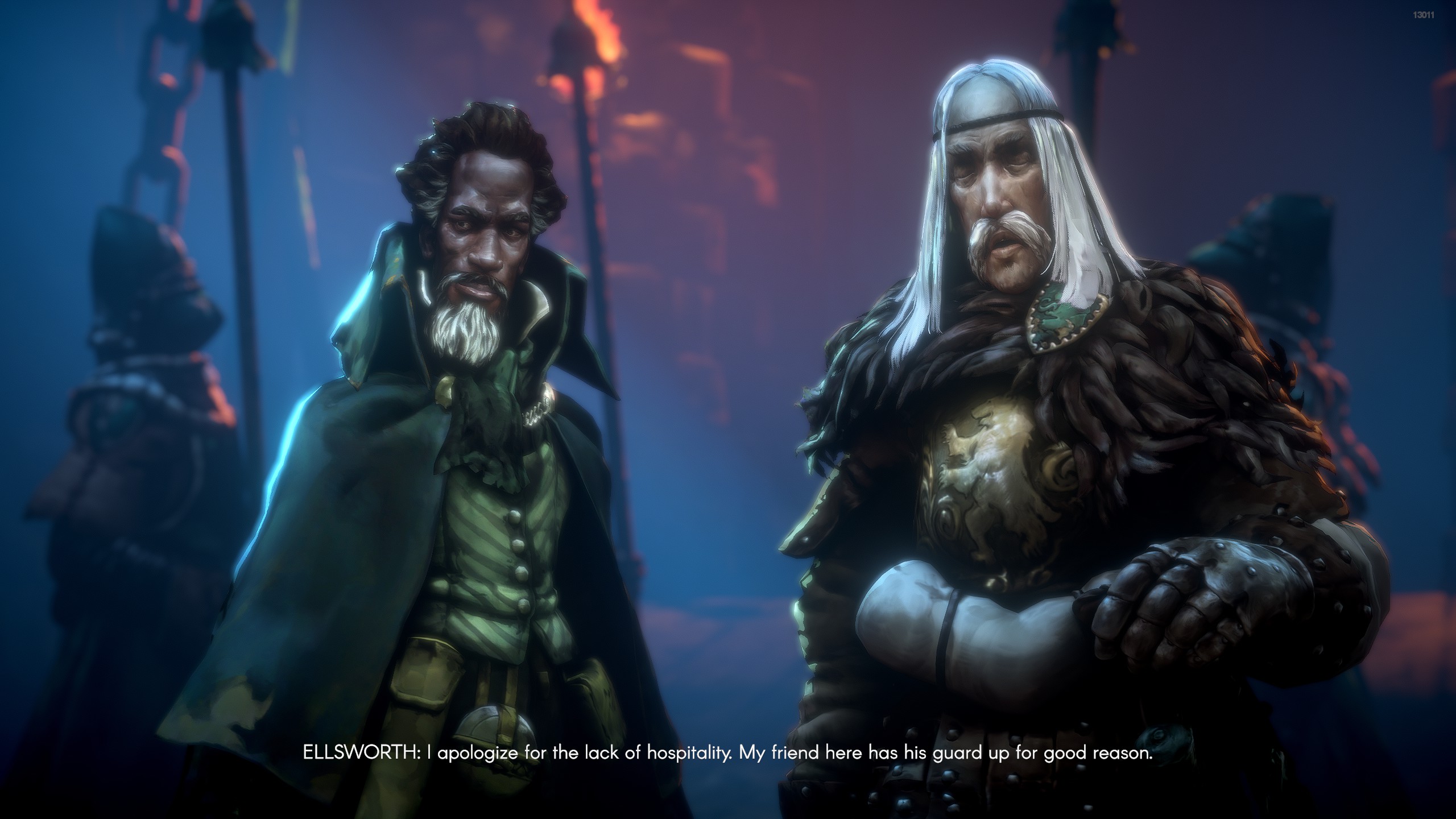
The storyline of Early Access is not very long, but it hints at something much bigger and the characters portrayed in the story are genuinely interesting so I was hooked right from the start and admittedly a bit disappointed that I have to wait for the rest of the story.
Combat
When we talk about the ARPG genre these days, the first titles that come to mind are games like Diablo, Path of Exile, or a relatively new addition to the family, Last Epoch. Usually, these games include slaying dozens of monsters in a matter of seconds and sorting through large amounts of more or less useful loot. Although the introduction to No Rest For The Wicked strongly reminded me of the aforementioned Path of Exile (where you start shipwrecked on an island with no gear and have to fight your way to the safety of the first city) other aspects of the game have only a little in common with the leaders in the genre. Firstly, there is no class system in character creation. You play as a Cerim, a member of a group of mysterious holy warriors with magical abilities. At the start of the game, you can customize the look of your warrior and allocate attribute points into eight available stats: health, strength, stamina, dexterity, faith, intelligence, focus, and equip load. These stats will determine what gear and weapons you can use, in what way, and how much life and stamina you have. At any point, you can decide to invest your level-up points in any of those categories. So if you want to change your combat style in the early stages of the game, you are free to do so, because you are not bound to a certain specialization. The weight of your gear and the choice of your weapon are what determines your play style.
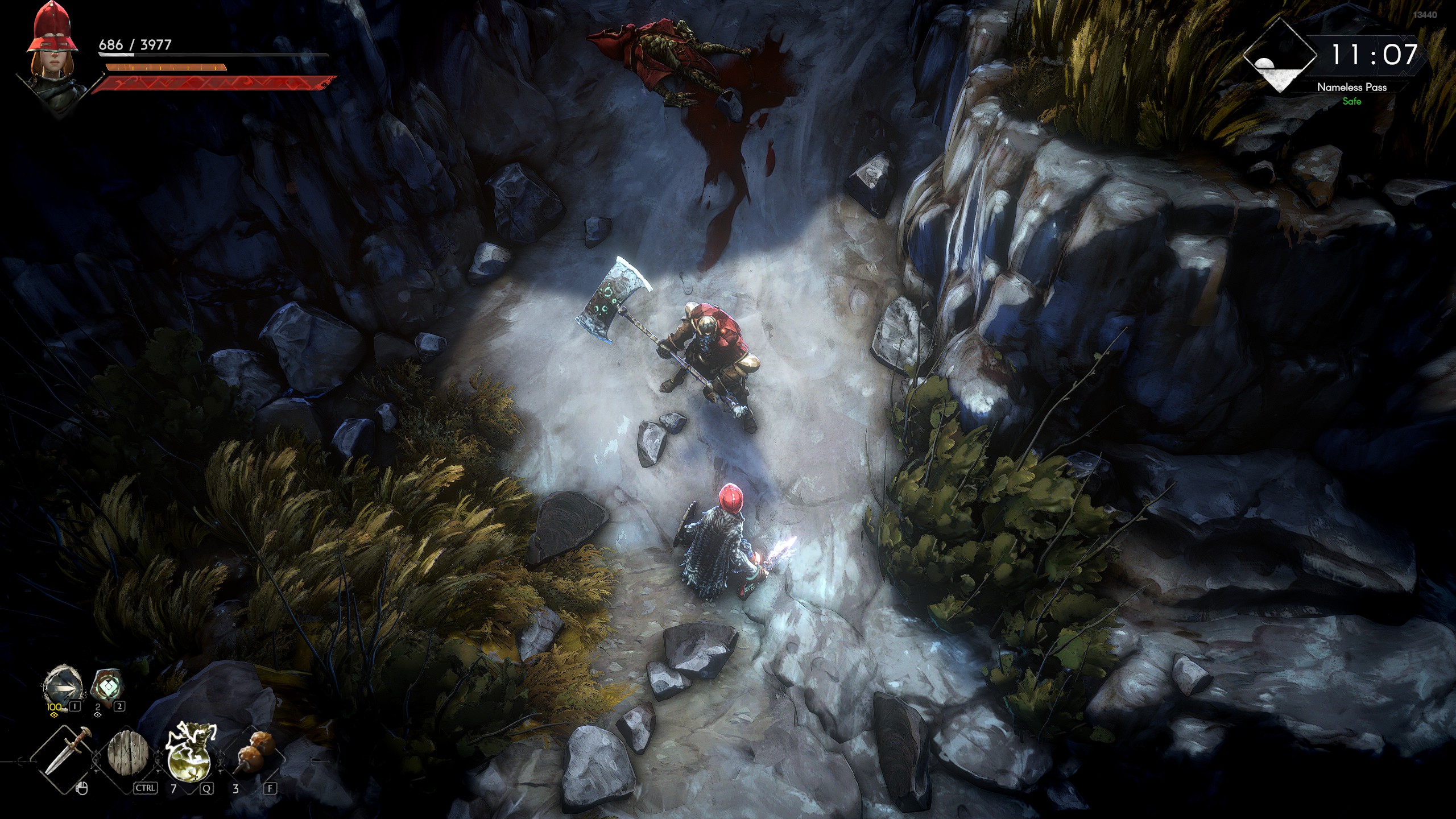
Secondly, there will be no slaying of endless hordes of demons, the combat rather resembles souls-like games, where you usually fight one-on-one (three bandits was the biggest enemy group I encountered) and every movement matters. The ability to parry is hugely important in the combat system and so is your equip load and stamina. If you take on heavy armor, a massive shield, and a heavy sword, you might feel invincible, but without enough attribute points in the needed categories, you will end up without stamina in the middle of the fight and easily lose to a more nimble opponent. The more weight you carry, the slower your movement and you require more stamina to swing heavier weapons. The combat is difficult and unforgiving, but also very satisfying when you finally start to master it. I wouldn't say it's a Dark Souls level of difficulty, but if you think that you can mindlessly attack enemies of a lower level, you are wrong and they will quickly prove it to you by dispatching you to the respawn point. I was never a big fan of souls-like games, but in No Rest for the Wicked, I found an awesome entry point into the genre because the game is great at balancing the difficulty and the rewarding feeling you get when you learn how to defeat your enemy.
My favorite playstyle was with a short sword, light shield, and a mix of relatively light armor, so I could evade a lot but still had some protection when enemies shot at me from a distance with crossbows. You can mix and match armor and weapons as you like, though some weapons require a certain level of a specific attribute and if you don’t have the required stat, the weapon will deal lower damage. It also works the other way, if the weapon, for example, uses faith and you level up that stat by several points, you deal more damage with the same weapon. There is a neat table in the level-up window, that shows you the impact of attribute points on your equipped weapons before you confirm your choice.
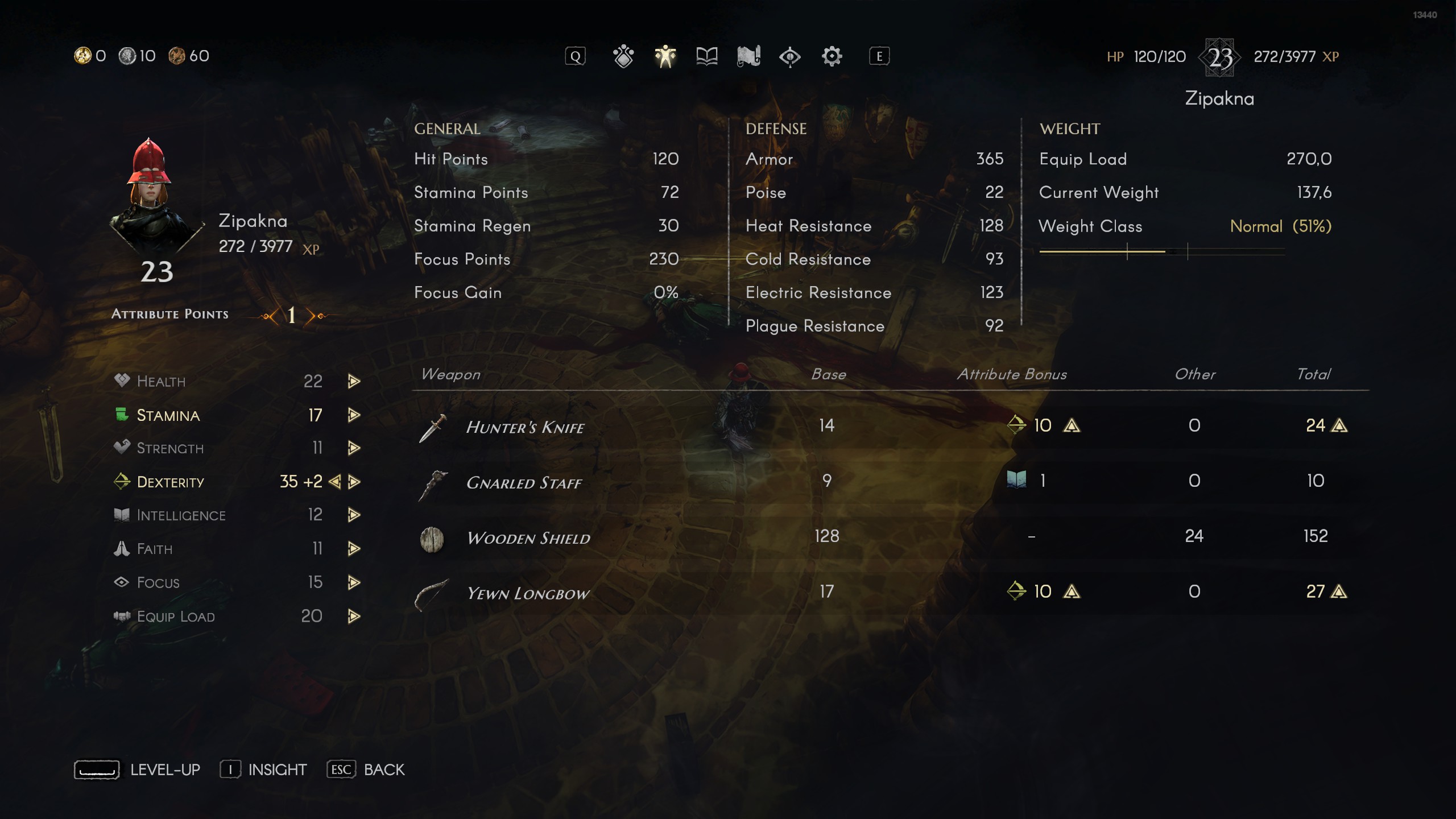
Apart from traditional combat, you also have special skills at your disposal. With every hit you manage to deal, you charge up the focus bar (alternative for mana) which allows you to use magical runes on your weapons. Every weapon has one or more runes, that use up the focus to perform a specific spell. The runes can be swapped out on the weapons and you can also use up your focus on a different weapon than you used to gain that focus. For example, my short sword had a rune for a special stabbing attack and also for a healing spell (I added the healing to the sword). But I also had a magical staff with a rune that casts fireballs, so my favorite combo was to slash the enemy a couple of times, then back up to a safe distance, swap to my staff, and throw a few fireballs on the enemy. Your options are very limited at the start of the game, you start with just one weapon slot, but as you progress through the game, defeat bosses and unlock merchants, you get more and more options on how to customize your gear and you unlock more slots for weapons, armor, rings, and additional inventory slots.
The gear is what makes the game closest to the other ARPGs. You have the classic gear rarities, from common to legendary, with one extra category, which is cursed gear. This type usually has some powerful stats, which are however balanced by a disadvantage, so for example a cursed armor could provide constant health regeneration, but you will lose experience if you die or your stamina will be lowered until you unequip that piece of cursed armor. Then there are the usual resistances to elements and each piece of armor has gem sockets, that you can use to give the gear some extra stats. You can even “gamble” with common gear and for a small fee make it enchanted or cursed, but the results are random and once the item gets cursed, it loses the majority of gem sockets so sometimes you have to choose between enchantments and gear upgraded via gem slots.
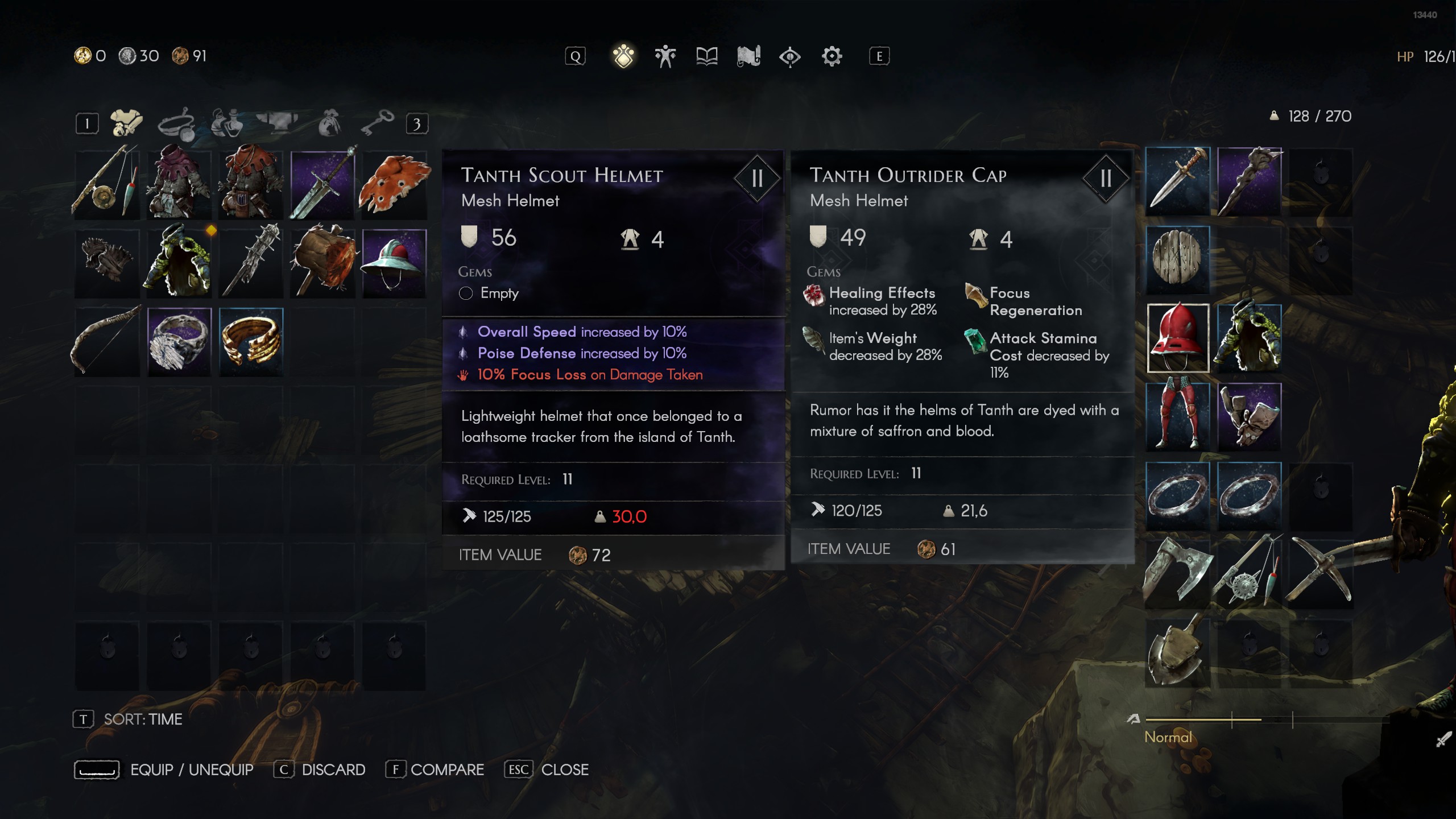
If you really like a certain weapon or a piece of armor, you can upgrade its tier at the blacksmith to increase its stats so you can keep playing with it as you level up. This is a completely valid strategy, because again, compared to other ARPGs, you won't find yourself knee-deep in useless loot. Weapon and armor drops are much rarer in this game and when you start to specialize in one of the attributes, many items will be useless for you, so it might take a while to find something that would replace your favorite weapon.
Then of course there is a wide range of potions, blade oils, bombs, and foods that give you a temporary boost, so you have a variety of ways how to deal with your enemies. Later in the game, you will also get access to the bows, which are currently very overpowered, because enemies often don’t know how to react when you fire at them from a distance. So you can safely snipe them from afar and what used to be tough combat at melee range becomes a shooting gallery. On the other hand, if you step away too far, the aiming becomes uncontrollable, and even with auto-aim on it becomes impossible to hit the enemy. Clearly, the ranged weapons badly need some balancing.
Exploration
Another feature that makes No Rest For The Wicked unique compared to other ARPGs is the verticality of the map. There are treasures hidden around every corner and you will have to climb, jump, dig, break rocks, and balance on tight beams to reach them. At the start of the game it’s a very helpful and easy way to get better gear if you are not very good at combat yet. While exploring you can also find and open shortcuts between areas, which will allow you to move across the map more quickly. There are magical safe spots across the map called Cerim Whispers, where you respawn and that also work as a fast travel point. However, you can only fast-travel between the Whisper in the city of Sacra and between the last Whisper you interacted with, so the shortcuts will be very helpful. You also need to scavenge for food, because it’s the only way to heal at the start of the game.
As soon as you defeat the first boss and gain access to the city of Sacrament, you will find out that there are many more uses for the things you found along the way. You will get temporary housing in the city, but you can also buy your own house, decorate it, and equip it with crafting stations of all kinds. There is also builder Danos, who will build various upgrades in the city if you provide materials like wood, clay, and metal. He can build structures that will allow access to different parts of the city, because Sacra is also built vertically, and some spots are hard to reach or it takes a long time to get there. The whole city is in a state of disrepair, therefore you can also invest in the rebuilding of several shops. As a reward, you will get access to better gear, crafting recipes, and materials. But building everything available in the city will take a lot of materials, so you really want to keep your eyes peeled on all those hidden treasures, ore veins, and other stuff that is hidden slightly out of the way.
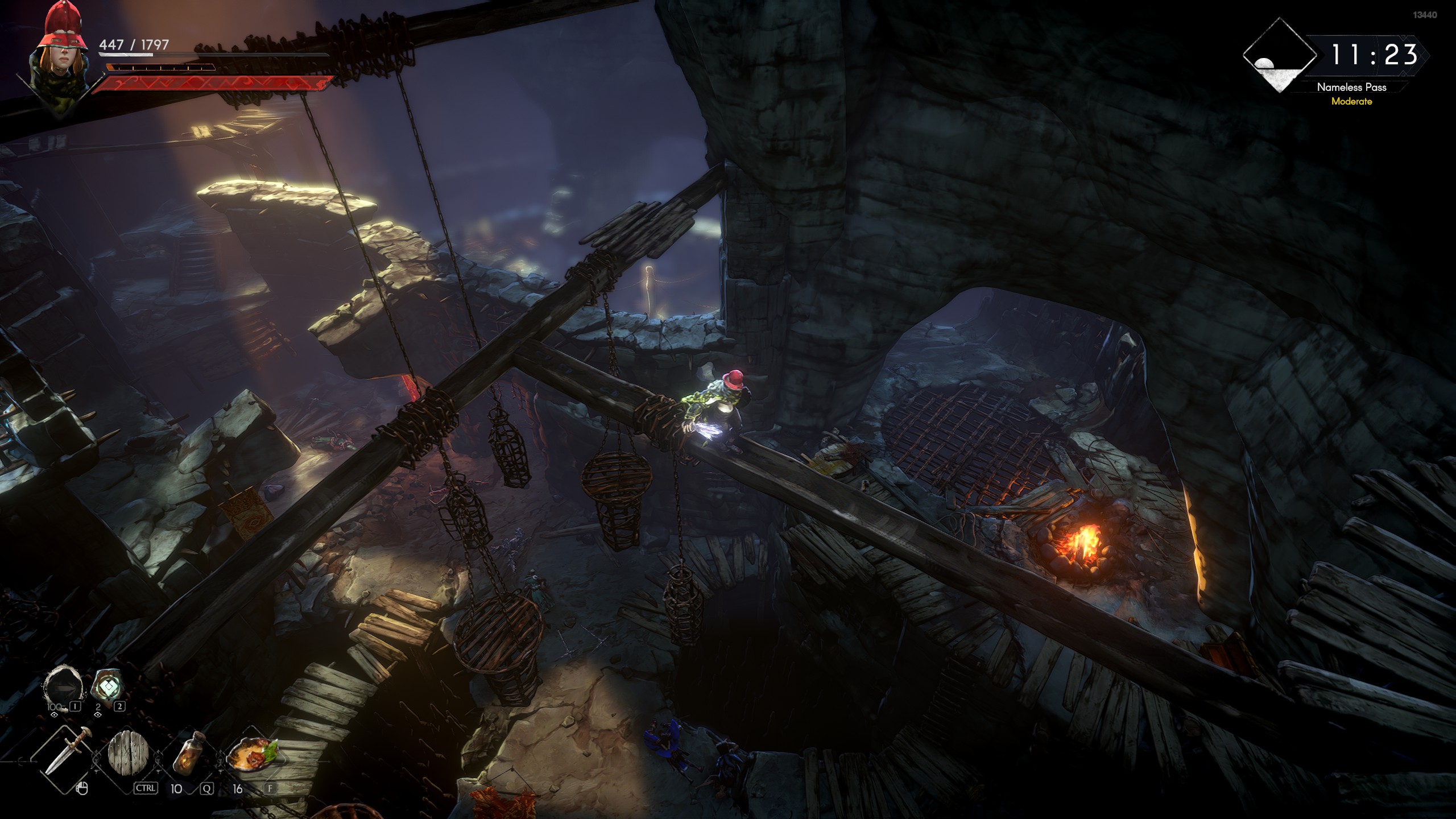
The game rewards exploration, not just blindly rushing through the enemies directly to the quest goal. However, this is also one of the few things that bothered me about the game. The game was clearly designed with the omnidirectional joystick of a controller in mind, so traversing certain areas with only WSAD is sometimes tricky, sometimes outright frustrating, because there is a fall damage and it is often deadly when you miss a jump or make a wrong step. There is a way to get around this issue, where if you hold Alt, the character will follow the mouse cursor and navigate the tricky spots more easily than with WASD. But it’s not a 100% reliable solution and it is not the only instance where mouse and keyboard feel like a subpar control method (for example map cannot be navigated by mouse dragging; map marks have to be placed by pressing enter, not by clicking directly on the map; swapping potions and food with mouse is often pretty wild in combat…) so I hope that before the full release, the devs will focus a bit more on mouse/keyboard controls. Even though they already added three different settings for mouse and keyboard controls, for me personally neither one of them felt like it’s the best way to play the game with.
Also, on the topic of building materials and exploration, I noticed that several players complained that there are not enough materials to complete all the upgrades and that they had to start a new realm, get the materials there, and go back to their main realm. The game is going to have a multiplayer/co-op feature in later stages of development, so even now you can have your character travel between realms/servers you start, with their whole inventory intact. Some players use this feature to gather materials more quickly from multiple realms. But in my opinion, this is not necessary, because the resources in your realm respawn after a while. Some of the big treasure chests remain open and looted, but trees, herbs, and other natural resources respawn often and some treasure chests do too. Plus there is an NPC in the city that gives you daily and weekly challenges, which usually consist of hunting down a certain type of monsters in a specific area. So you can grab a couple of challenges, head to the area where you’ll find your targets, gather resources along the way, and get rewarded when you complete the challenge. Also, early access allows you to explore only a part of the map so when more areas open, I believe that the resources won’t be an issue. And there is already a feature implemented, where others can contribute to building projects in your realm, so once the co-op feature becomes fully functional, you can even get help from your friends. However, it’s true that as the player progresses through the game and defeats various bosses, the loot tables seem to shift more toward the rarer items, so when I tried to get the last few pieces of clay for my town projects, I had a higher probability of digging up a rare weapon rather than an ordinary piece of clay. So maybe an NPC that sells general wares could have these basic materials in stock more often, not just once per 10 hours of gameplay.
The devil is in the details
The building projects in the city are very useful, but I had mixed feelings about the housing part of the game. When I finally had enough money to buy a house, I had no way how to look inside until I bought it. When exploring the city, I found several houses on sale, but the only information I got about them was the price. I chose a house that was closest to the market and the fast travel point and went on to customize it. You cannot change the layout of the rooms, but you can choose what to put inside and where. Most important are the crafting stations, but they also feel only like a time saver, because as you upgrade the shopkeepers around the city, most of the crafting stations will appear at their shop. Putting them in your house is therefore just a convenience, so you have everything in one place. And there are not many decorations or furniture to be found or purchased to create a truly unique look for your house. I hope this is just an issue of early access because I was really looking forward to creating a nice cozy home where my Cerim could recover after all the fighting, with trophies of defeated bosses displayed on the walls and this was simply not possible. Right now, the housing feels a little bit like a missed opportunity (unless the devs have most of the housing features hidden for the full release).
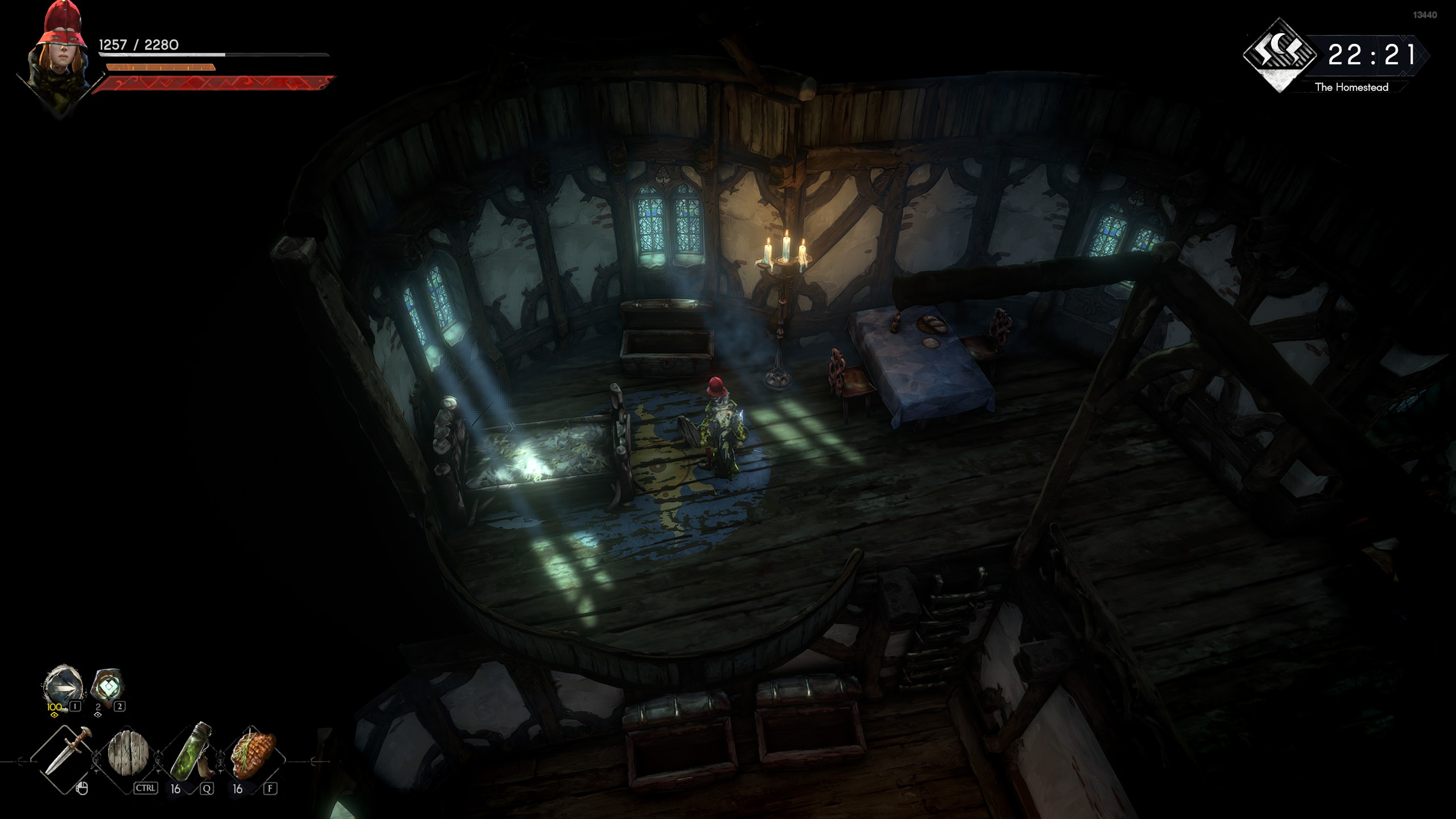
Also, every upgrade you make in the city takes several hours in real time to finish. So when you finally gather enough materials, you have to wait till your next gaming session to benefit from it. I’m not exactly a fan of this feature, but other activities tied to real-world time, like the daily and weekly challenges, and well-rested boost if you log off while your character lies in bed, those sort of balance things out a little.
My other issue with the game is that it cannot be paused… even when you are in the menu some ugly mutated creeper can come and bite you. And I can’t remember how many times I died because the cat in front of my screen does not understand that THIS game does not pause. Luckily death in No Rest For The Wicked is not very punishing, you just lose some durability on your gear, which really matters only until you get to the city, where you can repair it at the blacksmith. But still, even coop games can have a pause button implemented, so I see no reason why it should not be here when it’s a single-player right now.
But other than that, I really enjoyed my time with the game. The attention to detail in No Rest For The Wicked made me fall in love with the story part of the game, even though it’s not finished yet. Every NPC you meet has its own unique voice-acted line of dialogue. No “I used to be an adventurer like you” from every town guard you meet. On the contrary, even a random NPC can create an unforgettable moment. When I defeated my first boss (a guardsman mutated by the pestilence, that blocked the entrance to the city and took multiple attempts to defeat) and I victoriously marched through the city gates, my hero moment was immediately spoiled by a random NPC who told me that I just carved up what remained of their loved one. Or when I stole a key from a guardsman, to release a prisoner who in exchange gave me vital information about an imminent attack on the city. And when I later visited the local tavern, the guard was sitting there in the corner, drowning their sorrow in ale because they lost their job as a result. There are many more such moments, which make the game dark, yet enjoyable.
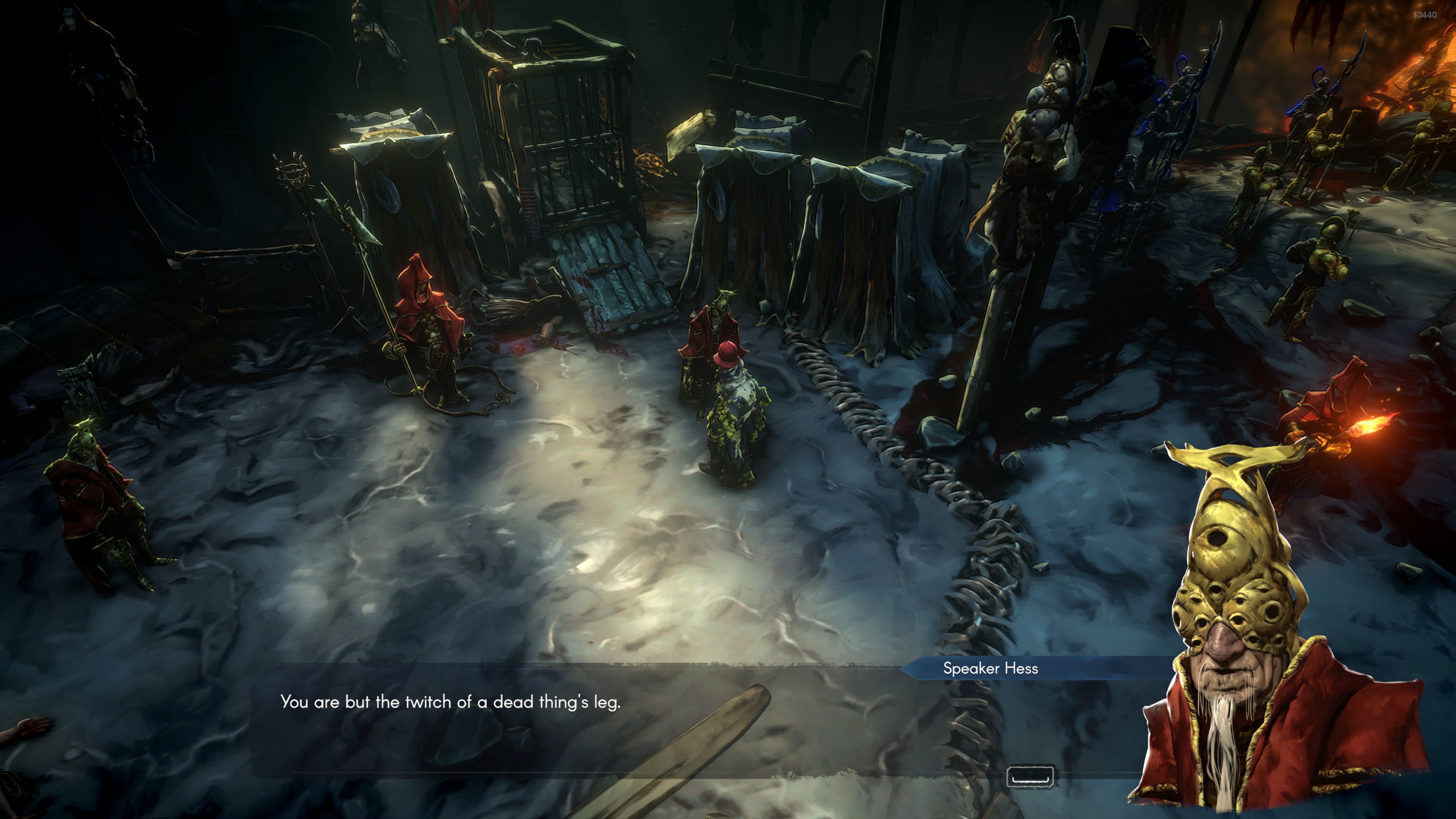
There are also many little details in the gameplay, that should be obvious but many developers forget about them, so I really appreciate them when I see them in a game. Like the ability to use materials stored in chests at any crafting station, or that if one enemy is attacking you, they can also accidentally hit and hurt the enemy standing next to them. As soon as I discovered that, my favorite strategy for every enemy with a crossbow was to line them up with another enemy and then proceed to block their attacks, using their buddy as a shield.
The sound design was also a pleasant surprise, my favorite moment was when I was exploring the sewers under the city and I could hear a monologue from an upcoming boss in the distance. As I got closer, the boss started yelling and the sound traveled through the sewers, creating echoes that sounded very real with headphones. There isn’t any memorable soundtrack like in Ori (at least not yet) however, the sound design does a great job of enhancing the grim atmosphere and warns you of nearby enemies before you can see them.
The endgame
After finishing the main quest (or rather the part that is available so far) and several side quests, the game leads the player to a sort of arena named Cerim Crucible. Here the player can fight through the rooms with progressively harder enemies, leading up to a special endgame boss. As a reward, the player gets advanced materials, that are not available anywhere else in the Early Access. Honestly, I tried this activity once and then abandoned it, because I'm in mostly for the story and it didn't make sense to me to upgrade my character just for the sake of getting further in the arena. By that time I spent around 20 hours in the game and while I would love to continue with the story or with the exploration of the island, grinding materials in the arena just wasn't for me and I decided to wait for future story updates. However, some people might find the challenge entertaining and they get a chance here to fight against a new boss that is not present in the story part of the game.
The verdict
I have been enthusiastic about No Rest For The Wicked since the announcement. From the first gameplay trailers, it was clear that the game would be closer to Souls games than the ARPGs. And although I never got into the Souls games, I know how awesome people at Moon Studio are at storytelling, so I was willing to suffer through the tough combat just based on that. My fears about the combat did not come true, the combat is challenging but not impossibly hard. And I was very right about the storytelling. The Early Access offers just an introduction to the story but it was enough to lure me in and leave me begging for more. The exploration of Isola Sacra also felt very satisfying. I like to check every corner of the map in every game I play and here it felt truly rewarding to do so.
The question is, should you buy the Early Access? As with any unfinished game, No Rest For The Wicked too contains bugs, some of them bigger, some of them smaller. So, if you are so excited about the game that you want to actively help in the development of the game, or if you are completely ok with bugs and some balancing issues and similar teething problems, go for it. The development seems to be on the right track because the team behind the game seems to actually listen to the player, and multiple issues with the game have already been resolved thanks to it. Therefore, I believe that your opinion will matter in the development process and that No Rest For The Wicked will evolve into an awesome game thanks to people who participate in Early Access. But if you are the sort of person who gets home from work in the afternoon and has just an hour or two to enjoy their favorite game, let’s wait for a finished product, when the game will truly shine and you won’t have to deal with the bugs, bug reports, and constant changes and updates. That goes for every Early Access, but especially for the ones that have the potential to produce great games. I had a great time with the No Rest For The Wicked Early Access, but I also can’t wait to play the finished product, where all of the island will be open to explore and I won’t have to wait for months to see the story of the game unravel.


